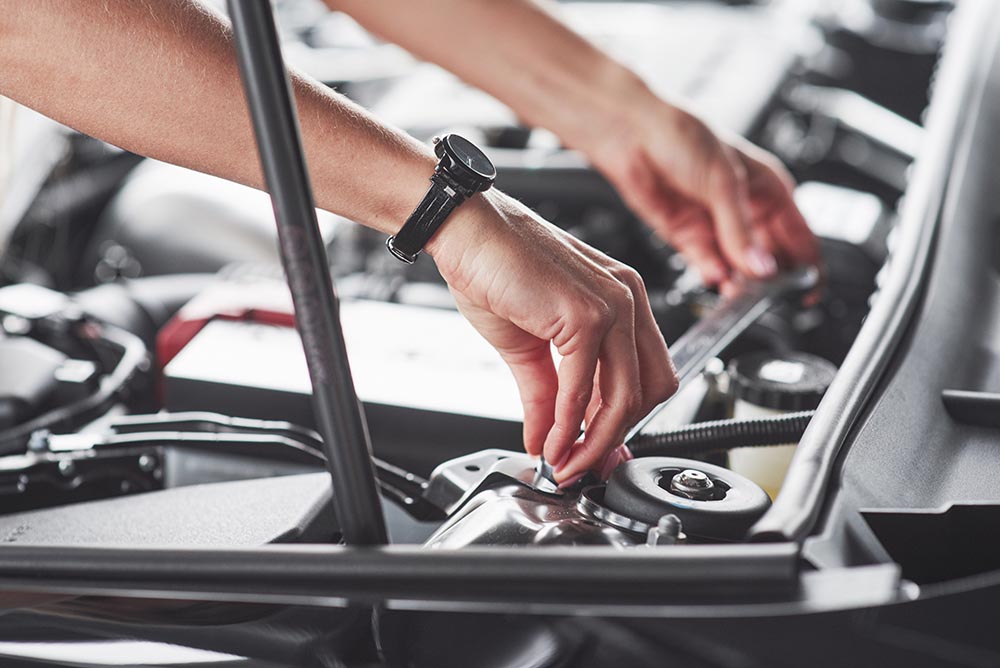How do you know if it is your battery or the alternator that is failing? Unless you’re a mechanic or you’ve been through a similar problem before, it can be difficult to tell. But don’t worry, in this article we’ve got some tips on how to check your alternator and battery in order to self-diagnose the problem. Of course, should you get stuck or be feeling overwhelmed try not to panic, simply contact your local expert for a second opinion.
How do I check my car alternator?
You can check your alternator in four simple steps:
- 1 – Open the hood of your car so that you have clear and unobstructed access to your battery. Locate the alternator and then check that the belt isn’t loose.
- 2 – Turn on your multi-meter and set it to the 20V setting.
- 3 – Start up your engine. By this point you will need to check and make sure that the alternator pulley / belt is rotating properly and isn’t slipping at all.
- 4 – Now, there are two ways that you can test the voltage from your alternator. If you can access the alternator easily without getting anything tangled in your pulley, then place the positive multi-meter probe (red) and touch it against the red terminal connector on the alternator. Following that, take the negative (black) multi-meter probe and attached it to the metal frame of your car (a bolt head will do). Do not ground to the alternator itself. Now, you will be ready to get a reading on the multi-meter display.
If your alternator is working as is expected, then your multi-meter will read somewhere around the 14 volts’ mark (most commonly 13.8 / 14.2).
If your meter is reading excessively higher than 14 volts (or anything greater than 15), then it is likely that the voltage regulator for your alternator is faulty or on its way out.
If your meter is reading below 13/14 volts, then there could be a number of reasons for this:
- It could be that the engine idle spin is too low for the alternator to generate sufficient power. In this case try revving the engine (around 2000 RPM or higher) and then take a reading.
- If the voltage is still too low, then double check the connectors on the alternator are tight and that the belt is definitely not slipping or spinning.
- If you are still not getting sufficient power, then it is likely that the alternator’s voltage regulator is in need of replacing.

Again, in order to charge a 12 bolt battery, then your alternator needs to be putting out at least 13 to 14 volts. If it is putting out too much voltage, then the battery acid is most likely to boil over and out of the battery. When a battery is almost fully charged the alternator should cease putting out sufficient voltage to charge it and the reading you will get from the battery probing method will in fact be the voltage coming from the battery itself (it’s a minefield). In this case, you can leave your lights and stereo on for 15 minutes or so in order to drain your battery a bit.
Finally, another helpful thing to try is testing the battery terminals with the engine off and then turn the car on and test at the terminals once more. If the battery is somewhat fully charged, then it should read around 12-13 volts with the engine off. If you’ve run your car for a while, then while the car is running your voltage should be around the 13-14 range as expected, but then if you turn the engine off again and the voltage drops instantly below 12, then the most likely outcome is that your battery is due to be replaced or perhaps need a little TLC.
What are the signs of a bad alternator?
What are the signs of a bad alternator? Here are 7 tell-tale signs that it might be on its way out:
- Dim or Overly Bright Lights
- Dead Battery
- Slow or Malfunctioning Accessories
- Trouble Starting or Frequent Stalling
- Growling or Whining Noises
- Smell of Burning Rubber or Wires
- Battery Warning Light on Dash
Can a bad alternator kill a new battery?
If your alternator becomes faulty, then it can indeed kill your battery. Most car batteries do not like being run all of the way down. If your alternator has been struggling for a while, then it means that your battery has likely been low for a long time as well and this is not good for the battery. Your best bet will be to fully charge the old battery and then have it load-tested as a precaution.
Can you jump a car with a bad alternator?
You can indeed jumpstart your car with a bad alternator. However, do not leave your jumper cables connected between the vehicles longer than is absolutely necessary as otherwise it can cause serious damage to the sensitive electronics. Be careful!

What are the signs of a bad car battery?
Here are some tell-tale signs that your car battery is on its way out:
- Dimmed headlights: if your car battery is on its way out then it is not going to be able to provide enough juice to fully power your car’s electronics, including the headlights
- A clicking sound when you turn the key
- Slow crank
- Needing to press on the gas pedal to start your engine
- Backfiring
Conclusion
If you are having any doubts and you aren’t quite comfortable making the diagnosis yourself then it is always worth consulting an expert. The longer you leave it to speculation, the more likely you are to be causing irreparable damage to your vehicle.
In addition to that, if you think it is about time that you upgrade your battery altogether, we recommend a reputable supplier such as G7 Battery for a grand selection of premium quality car batteries.
